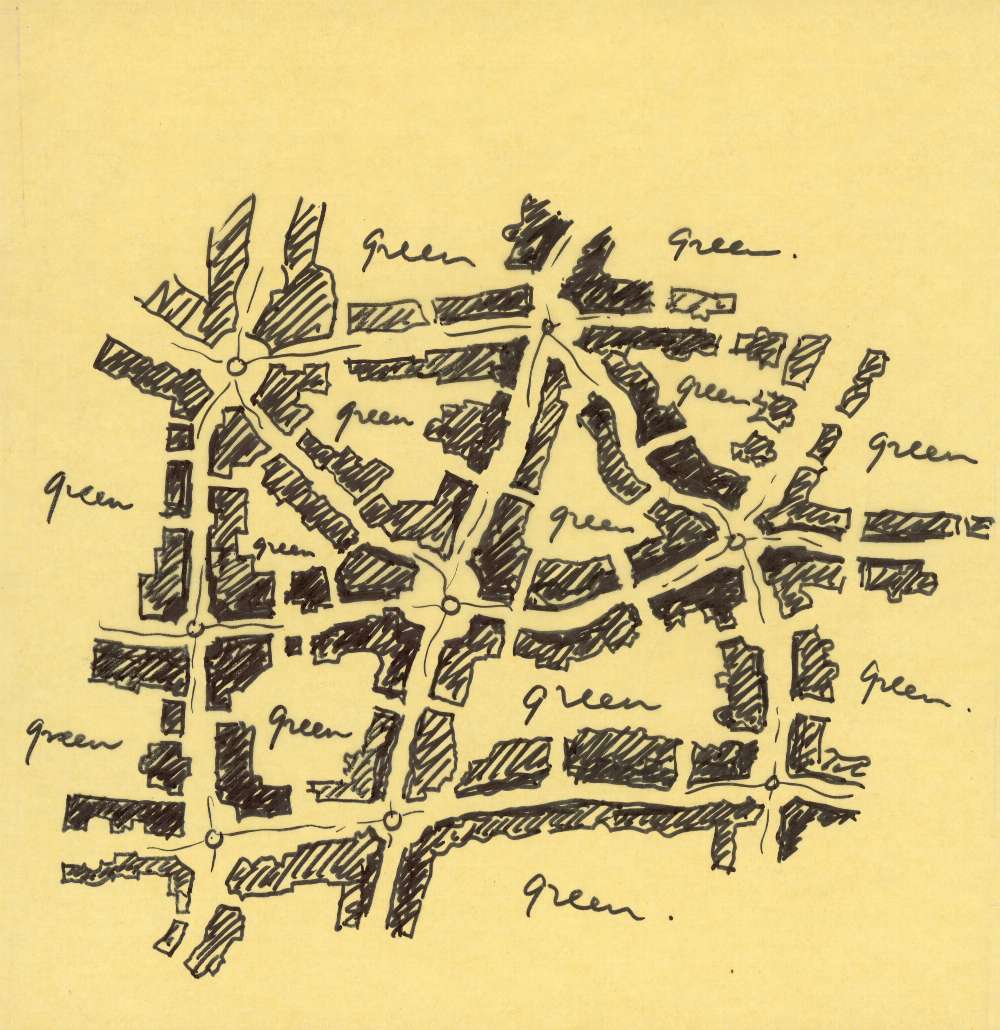
Master Plan for the University of Oregon: Sketches
01/01/1969Sketch illustrating the best way to integrate the following six patterns: University Streets, Accessible Greens, Building Complex, Activity Nodes, Wings of Light, and Positive Outdoor Space. It depicts a system of small buildings along narrow pedestrian streets that intersect in activity nodes and are surrounded by larger green areas.
References
-
Development of first Patterns and Pattern Languages
The first patterns were developed in 1967 by a group of people working together with Christopher Alexander in the Center for Environmental Structure. Between 1968 and 1976 the first pattern languages were developed and tested for particular projects undertaken by ...
-
Project Specific Pattern Languages - Specificity and Generality of Pattern Languages
A shared pattern language in a project acts as the generic system which gives the power to the smaller local acts to form a whole. Within the process of making a project, every individual act of building differentiates space. However, ...




 Go Back
Go Back